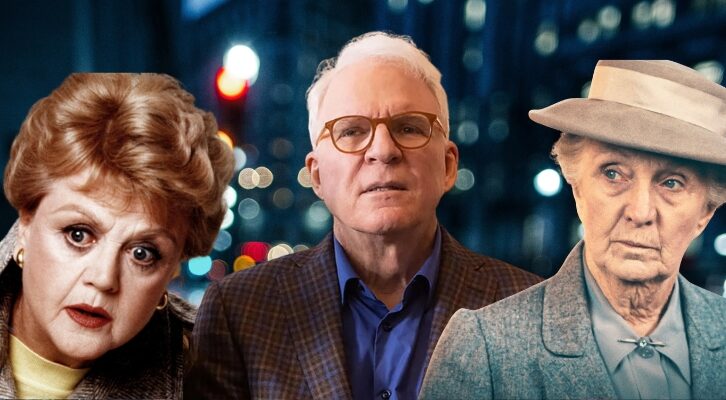
A Rare Sacred Novel: Tommy Orange on the Genius of Leslie Marmon Silko’s Ceremony
From the Foreword to a New Edition of the Classic Native American Novel
Leslie Marmon Silko’s Ceremony is close to what I would call sacred in fiction. There are not many books I would put in this category. Kafka’s Blue Octavo Notebooks, Borges’s Dreamtigers, Clarice Lispector’s The Hour of the Star. And I don’t mean sacred in the religious sense. But unlike all these books, which are more blatantly philosophical and less story-filled, Ceremony is in a class of its own.
I grew up with an evangelical Christian mom and a dad who was a part of Native American Church ceremonies—two religions that were in direct conflict with each other even while both of my parents addressed Jesus in their prayers. What I mean when I say sacred has more to do with its level of impact in Native communities in this country, and Indigenous communities all around the world.
What I mean by sacred when talking about this book is its singular devotion to knowing and gorgeously describing the lands it depicts; the way this book allows for its people to find new ways to heal from heartache and trauma in a broken and war-torn world. What I mean when I say this book is close to sacred is also to say that it is not sacred and does not intend to be, and that is part of what I first came to love about fiction.
What I mean by sacred when talking about this book is its singular devotion to knowing and gorgeously describing the lands it depicts; the way this book allows for its people to find new ways to heal from heartache and trauma in a broken and war-torn world.
It renders a world, it delivers us with story, gives us what the world is made of in a whole new context, one that exists in communion between writer and reader, reader and page, for the time they exist as one while the story is being told/read.
Fiction isn’t trying to be sacred text, it is trying to be like the world. In other words, it is trying to be everything, and this book, Ceremony, is doing so much I had never read and still continue to not find in fiction—a combination of old stories and new stories, of prayer and spell and poem and song, but always, always doing the work of storytelling.
When I first read this book, I thought: “Oh, I don’t know we could do this.” And I still don’t know how.
*
I came late to reading, to the enjoyment of reading, to the love of fiction. Once I arrived in this new (to me) world of language and story I hadn’t known existed, hadn’t known I could love, I made my way on my own. With no friends who read and not having come from a family of readers, I just sort of felt my way through the dark.
After I graduated with a BS degree in the sound arts in 2004, I couldn’t find a job related to my field of study, and ended up working at a used bookstore. It was admittedly a strange choice for me to apply as a nonreader and also for the bookstore owner to hire me, but I probably looked like I could carry a decent amount of books, as my background leading up to this moment had been as an athlete.
I ended up moving the whole fiction section from the back of the store to closer to the front. I would try out books and read what I liked if a voice pulled me in or if the story from the back of the book sounded interesting enough to keep me going, or sometimes it was the way a spine looked. I read lots of works in translation, and lots of Kafka and Borges. But no Native literature, none, I didn’t even know it existed.
If someone put in my hands something that ended up redefining the word “story” itself, gave me back the essence of prayer, included Native people in cities in bars; that mentioned Oakland several times, and a half-breed character, a half white half Native character, someone I identified with, and hadn’t read about anywhere, it would have changed me sooner.
I spent the next ten years in fact figuring out where I fit into fiction, finding ways to get permission to write my story from writers who did not share a background with me. I think I probably wasted a lot of time, and looked harder than I needed to in the corners and pockets of literature that left me wanting something closer to home.
I had tried different Native authors during that time, but it all felt so reservation-based, and because I am a Native person who grew up in the city, with a white mom, it made me feel isolated, and like I didn’t belong to the kinds of people those writers were writing about—due to my own insecurities of course and no fault of those writers.
I think my path to writing would have been smoother and less winding, would have been more focused and clear, had someone just handed me this book at an earlier age. If someone put in my hands something that ended up redefining the word “story” itself, gave me back the essence of prayer, included Native people in cities in bars; that mentioned Oakland several times, and a half-breed character, a half white half Native character, someone I identified with, and hadn’t read about anywhere, it would have changed me sooner. If that matters, I’m not sure.
I feel ashamed to say that I didn’t read this book until 2014. I read it in my MFA at the Institute of American Indian Arts. I have since then read it twice and have found many new things each time. Some books are all about timing, when they come into your life. Sometimes you don’t return to them and they serve their purpose on your book path, and other books you read again and again and again. Ceremony is one of those books for me.
There is a story Silko tells at one point in this book where she talks about medicine people gathering for a kind of conference, and casting all kinds of dark spells, one-upping each other with their magic, and one of them tells the story of what is to come. This was before European colonization, and she lays out all the horrors of what will happen to Native people in brutal detail, to the point that she scares everyone, and they ask her to call it back, to call back her story.
I think it’s the same with this book only in the opposite way. Ceremony cannot and should not be called back. It has given so many of us so much and will continue to. It has already changed the world.
______________________________

From the foreword to Ceremony by Leslie Marmon Silko, published by Penguin Classics, an imprint of Penguin Publishing Group, a division of Penguin Random House, LLC. Foreword copyright (C) 2024 by Tommy Orange.
Tommy Orange
Tommy Orange is a graduate of the MFA program at the Institute of American Indian Arts. His first book There There was a finalist for the 2019 Pulitzer Prize. Orange was also the recipient of 2019 American Book Awards. An enrolled member of the Cheyenne and Arapaho Tribes of Oklahoma, he was born and raised in Oakland, California.



















